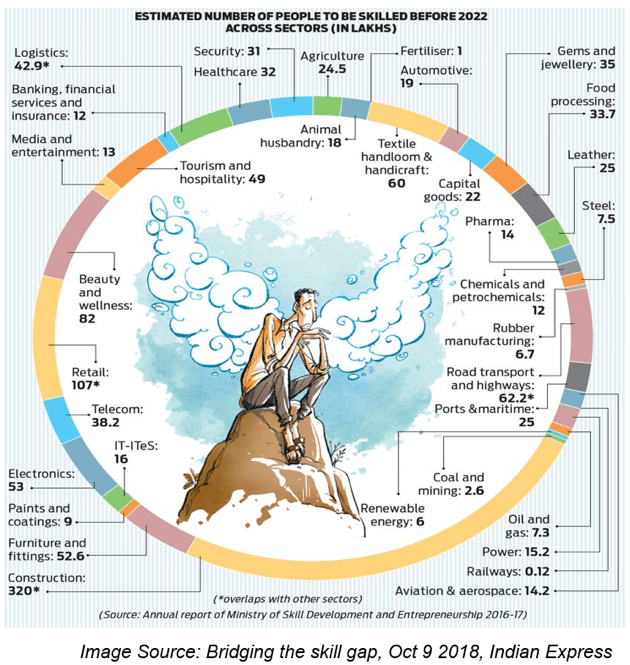Skill development is used by economies the world over to propel youth towards higher employability, increased labour productivity, income growth, and development. Skilling is also a powerful enabler to lift bottom-of-the-pyramid workers out of ‘survival mode’ towards decent work. And decent work provides equal opportunities for productive work that delivers a fair secure income in line with worker rights and social protection for their families.
“Education, vocational training and lifelong learning are central pillars of employability, employment of workers and sustainable enterprise development” – says the ILO.
What Is Productivity?
Measuring productivity differs for individuals, enterprises and the economy. Simply put, productivity may mean improvement in real GDP (economy), higher profits (enterprises) and increased wages (workers).
And these increases are a result of various factors- a skilled workforce, adoption of technology and innovation in the workplace- backed by solid policy-making and implementation across macro and micro levels. In other words, better input heightens the chances of better output.
Read Key Markers in Skills Training – Part I and Part II
What is the Evidence?
Technical and Vocational Education and Training (TVET) appears to be a key lever in tipping a workforce towards higher productivity and wages. A recently published study, which analysed the effect of vocational training (vis-à-vis zero training) on wages across agriculture, manufacturing, and services in India found significant wage hikes between 17.6%-36.9%.
In Germany, higher education dropouts without vocational qualifications were worse off in finding work compared to their counterparts who had received vocational training. This has important implications for India where the dropout rate from formal education peaks (17%) at the secondary level.
The Right Script
To successfully link worker capacity building with skill development, countries have worked with three main objectives:
- Skills demand-supply matching- This boils down to making skills training relevant which can only be achieved effectively if training decisions are based on robust labour market information systems which provide credible sectoral and occupational skills data. The next important link is to use this information to build quality TVET systems in education, employment training services, and to provide workers equal access to such training.
- Supporting workers and businesses respond to change- How can worker transition be made smoother from low productivity occupations, activities and sectors towards higher productivity ones? Skilling, up-skilling, re-skilling, recognition of prior learning- all have a play to develop an agile workforce infused with the notion of lifelong learning to adapt and remain relevant.
- Anticipating training needs and working to plug future gaps- This entails long-term planning where training and education systems nurture individuals towards future skill needs.
The NCAER’s ‘Skilling India-No Time to Lose’ report aptly illustrates the above objectives by underscoring skilling as the game changer to propel the Indian workforce towards higher employability and productivity.


How Can It Be Done?
The MSDE had estimated around 127 million individuals will need skilling between 2017-2022 to be competent at their jobs across 34 sectors/sub-sectors. The National Policy on Skill Development aims to newly train about 104.62 million individuals plus an additional 460 million to be skilled, reskilled and up-skilled by 2022.


Dr. Rajendra Kumar Pandey, in the 2015 India Skills report[vi] explains the challenge to improve the skill levels of our workforce as, ‘the phrase skill gap refers to redefining the relationship between education, industry and business.’ The issue gets further compounded as close to 81% of the employed in India work in the unorganised sector. How can TVET make a difference from the bottom up? How can investments in skill development maximise benefits to workers, businesses and the economy on the whole?
You may also like Why Do We Need Skill Development Indicators?
Through concerted coordination in three vital areas:
• Creating the foundation for important linkages between basic education and TVET; technical and vocational training to labour market entry; labour market entry to a culture of lifelong learning
• Establishing strong links and partnership working between employers and external training providers to enable the design and delivery of training in line with business needs and worker aspirations. This is critical to solve the huge mismatch in skills supply and demand in our country today.
• Skill development policies cannot work in silos. Integration is called for with other allied policies such as industrial, trade, investment, trade, and technology policies, and regional or local development policies.













